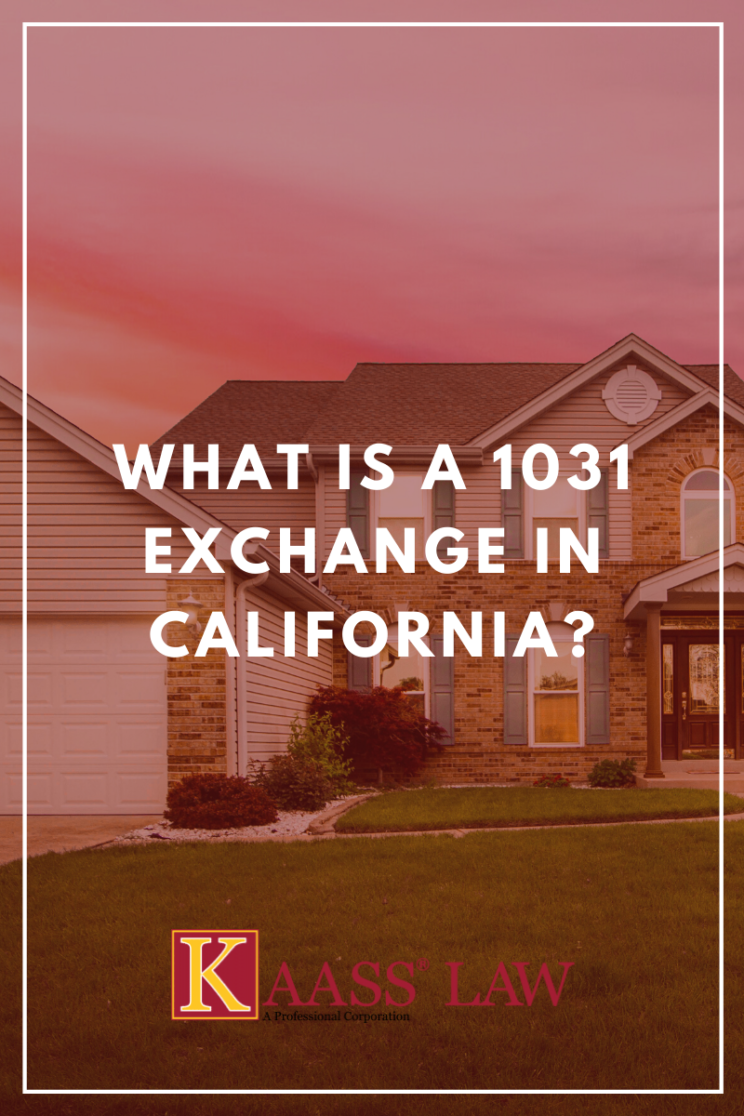In California if a person wants to sell an investment property and wishes to buy another one, he/she should be aware of the 1031 tax-deferred exchange. This procedure allows the owner of investment property to sell the property and purchase like-kind property while deferring capital gains tax
What is a 1031 Exchange?
The name of 1031 exchange gets from the U.S. Internal Revenue Code Section 1031 according to which a person can avoid paying capital gains taxes when selling an investment property and reinvest the proceeds from the sale in a property or properties of like kind and equal or higher value.
According to the Internal Revenue Code Section 1.1031, no loss or gain is recognized in case the property held for productive use in a business or trade for investment is exchanged exclusively for the property of a like-kind to be held either for productive use in a business or a trade or for investment.
Types of Real Estate Exchanges in California
There are several types of real estate exchange when you wish to participate in a 1031 exchange
- Simultaneous exchange
- Delayed exchange
- Construction or improvement exchange
- Reverse exchange
Simultaneous 1031 Exchange
One type is a simultaneous exchange when a 1031 exchange happens on the same day.
This type of exchange can take place in two separate ways:
- The first way is where a person swaps deeds with the owner of the other investment property
- The second way is a three-party exchange. This occurs when the transaction between a person and the owner of the other investment property is enabled by a third party called a Qualified Intermediary, who handles the entire exchange.
Delayed Exchange: 1031 Exchange
The most common type of 1031 exchange is called a delayed exchange. 1031 Exchange occurs when a person sells a property, receives the money, and buys the property after a delay, which could be from one day to several months before getting the replacement property. A person has 45 days to identify a new property and 180 days to close the transaction
In the event, a property investor fails to buy a replacement property within the time limits, the property investor will have to pay capital gains on the proceeds from the property sale.
Improvement or Construction Exchange
This is a type of exchange that allows the person to make improvements to the property before the actual exchange happens. In this case, the property is placed with a capable intermediary for 180 days and within this period a person can use the exchange equity to make the required improvements. However, there are three separate requirements that you must meet
But in case a person wants all gains to be free from taxes he must follow these rules:
- all exchange equity must be spent as a down payment or by making construction and improvements to the property within 180 days.
- The taxpayer must get the same property that was identified on the 45th day
- The property must be at an equal or greater value once it is given back to the taxpayer
Reverse Exchange
This type of exchange allows the person to find and purchase an investment property before selling his own investment property. This helps the person to wait to sell his property until the market value of the property increases.
In this case, the transaction mainly occurs with 100 percent cash. A person has 45 days to determine which one of his investment properties will be relinquished and after that he 135 days to complete the sale.
For more information regarding 1031 exchange or investment proeprties we invite you to contact our real estate attorney at (31) 943-1171 today.

